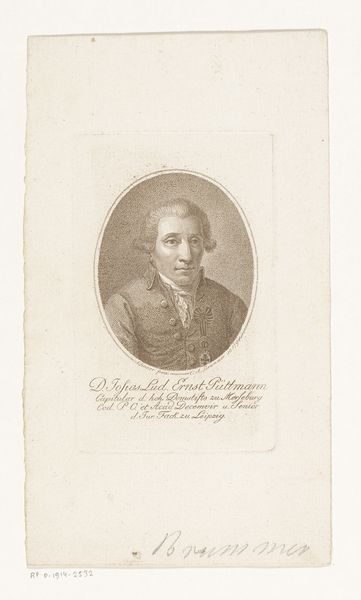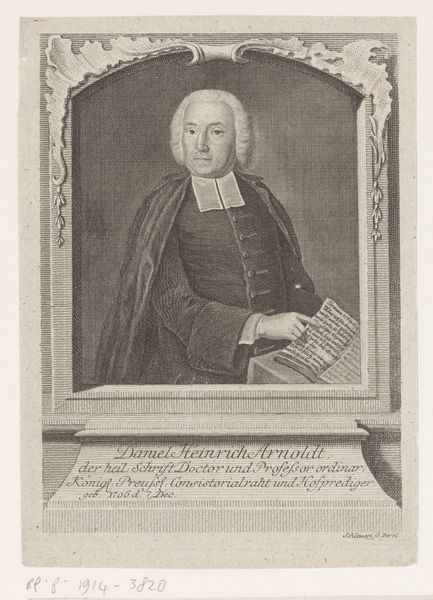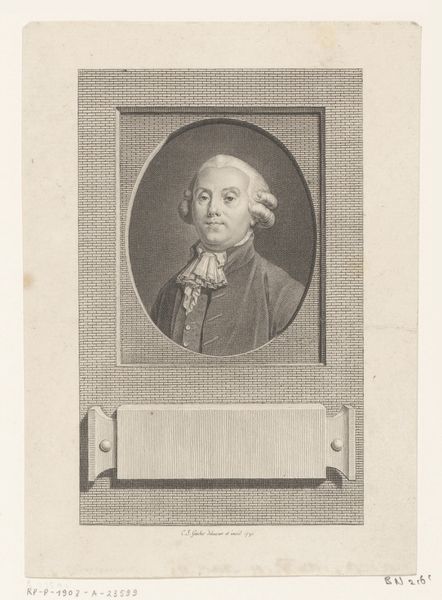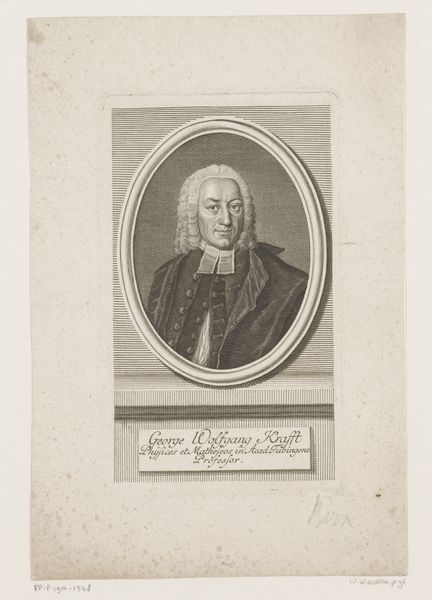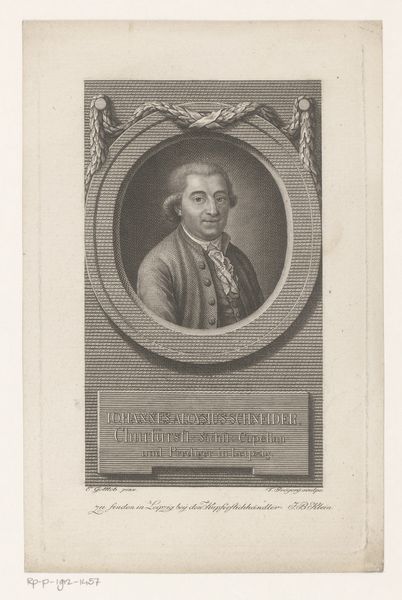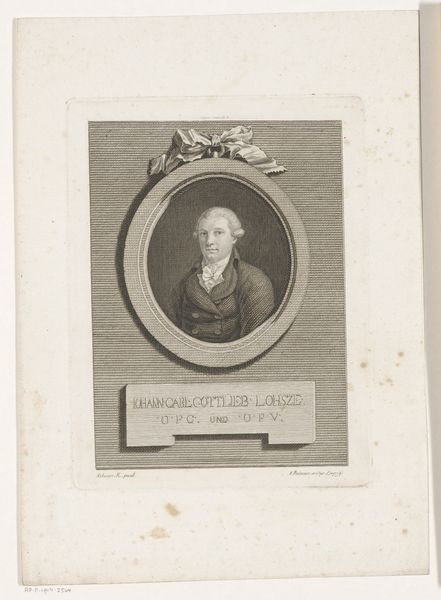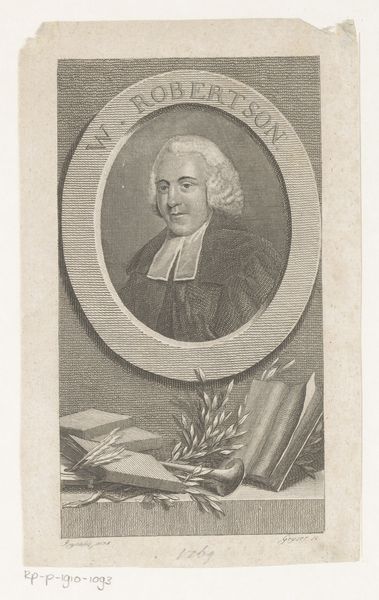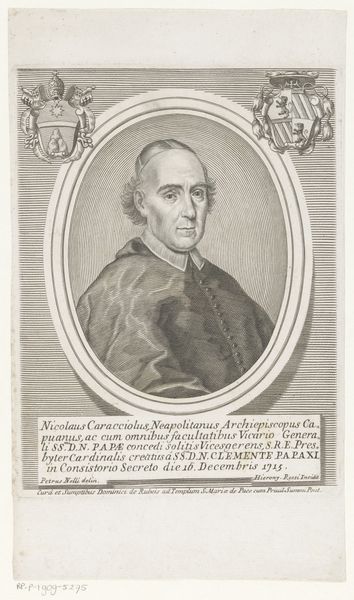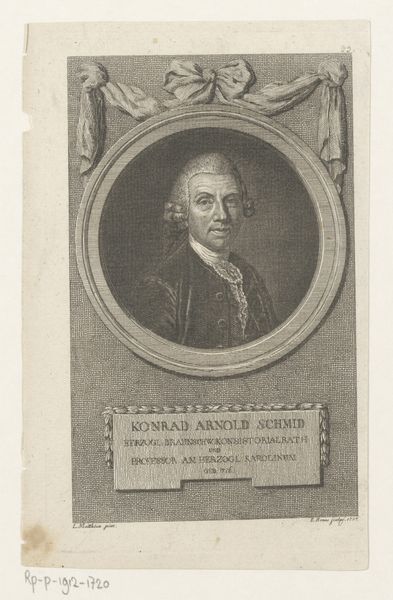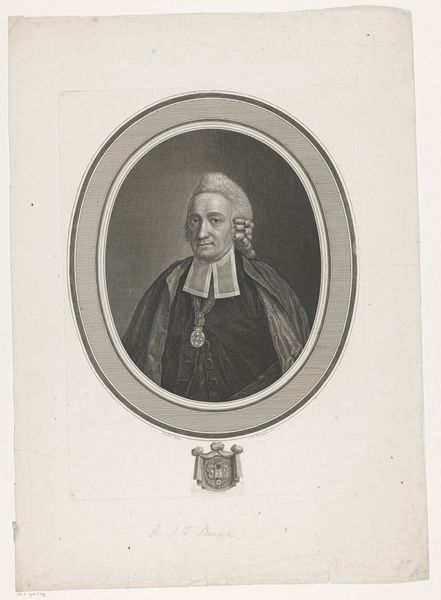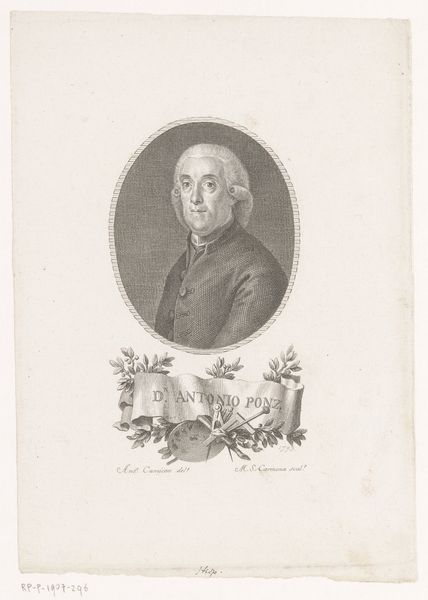
print, engraving
#
portrait
#
baroque
# print
#
old engraving style
#
engraving
Dimensions: height 180 mm, width 118 mm
Copyright: Rijks Museum: Open Domain
Curator: This is a Baroque-style print, an engraving, created by Joseph Anton Zimmermann sometime between 1715 and 1797. It's a portrait of Eusebius Amort. Editor: It's a rather stern image, wouldn't you say? There's something almost severe about the way he’s presented, despite the softness achieved through the engraving. Curator: I think it reflects the sober religiosity of the era and perhaps something of Amort’s personality as a “Regulirter Chorherr in Polling,” a canon in Polling. The composition, with the oval frame and architectural embellishments, signals his status within the church. Editor: Status, yes, but also the rigid structures of power within religious institutions. The clean lines of the engraving and the symmetrical composition convey an air of unyielding authority. It prompts questions: What kind of power did Amort wield within his community? What were the social dynamics at play? Curator: Considering he was born in 1692 and died in 1775, we're viewing him near the height of his influence. Prints like this circulated within networks of patronage and intellectual exchange, reinforcing social hierarchies. Zimmermann was likely commissioned to produce this for a specific purpose, solidifying Amort's reputation. Editor: So, in essence, this image functions as both a personal likeness and a piece of strategic propaganda. This speaks volumes about the politics embedded in portraiture and printmaking at the time. It highlights how seemingly innocuous artistic practices contribute to power dynamics, and raises further considerations concerning censorship, access, and the ethics of representation. Curator: It provides insights into how someone like Amort wished to be perceived by both contemporaries and future generations. I believe, as such, it can tell us so much about social identity, personal agency, and the enduring appeal of visual legacy. Editor: I am just left wondering about who benefits and whose voices were muted by that carefully constructed narrative. Thanks for expanding my viewing of the piece. Curator: And thank you for providing much-needed perspective.
Comments
No comments
Be the first to comment and join the conversation on the ultimate creative platform.
